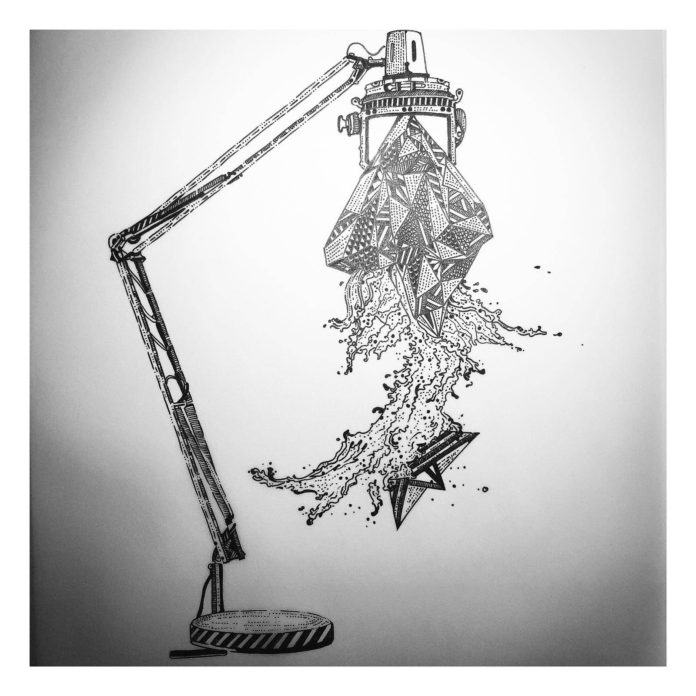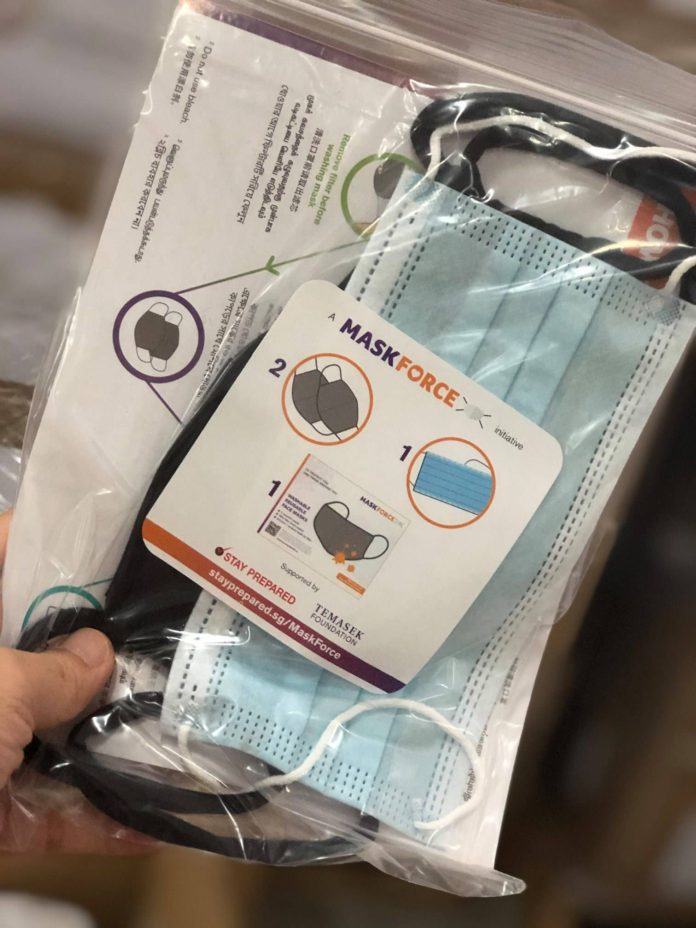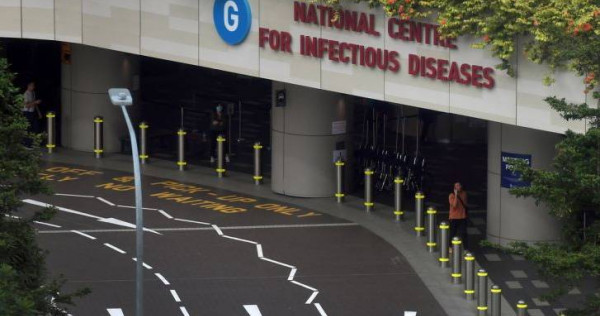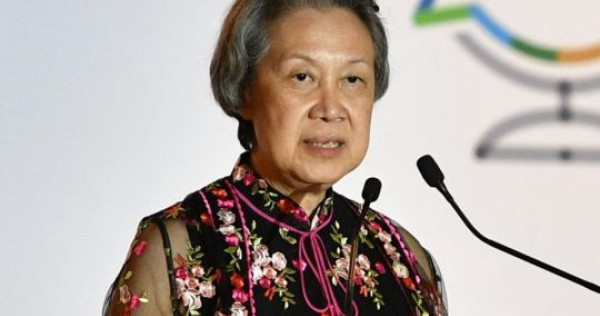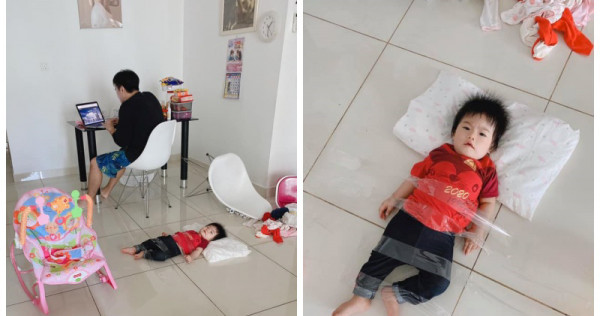Qoo10 is running a promotion featuring free cart coupons worth $8….read more @SINGPROMOS.COM
[ad_2]
Source link
Qoo10: Grab free $8 cart coupons (usable with min spend $60) valid till 21 April 2020
Commentary: How Zoom-working will change companies forever
HONG KONG: Like thousands of other professors, the executive education programmes I teach have either been cancelled or migrated over to Zoom, under the shadow of a pandemic.
Just the other day, one of my class participants, John, presented a case study.
“What a Zoombomber,” someone moaned in the chat window for the online class session. The chat window pops its head as more classmates chime in on what they think of the speaker’s opinion. “That’s just so John,” complains another.
READ: Commentary: Remote working promised freedom, but seems to be delivering the exact opposite
READ: Commentary: COVID-19 outbreak reveals poor etiquette in working from home
But here’s where it gets interesting. In the chatbox exchange, John’s classmates are not only expressing their opinions of how John is doing but also adjusting their feedback accordingly
All of a sudden, observers are forced to confront the collective and more balanced opinion of others. “Well, I guess he has his reasons for saying so,” someone now says emphatically.
John is receiving this more generous evaluation in large part, I suspect, because he has taken notice of that very chatbox and is using that feedback during the conversation to course-correct the Zoom presentation he is making, in real time.
John’s rhetoric subtly shifts. His words stay bold but come across a little less brash.
A student takes class online while using the Zoom app at her home. (Photo: REUTERS/Amr Abdallah Dalsh)
And if John were to ask me what I thought of his presentation, I would tell him that he’s been quite attuned to people’s feelings. Thank you, chatbox.
OUR NEW DIGITAL LIBRARY
The inevitable experiment arising from these travel bans and social distancing restrictions is the work-from-home arrangement companies have to embrace en masse and deploy, for instance, video conferences in lieu of face-to-face meetings.
We are, unwittingly, producing a staggering digital library on how managerial decisions are made. Meetings like the one described above are recorded and then stored in the cloud.
Far from minutes of a meeting that summarises only the conclusions, this digital footprint captures the entire deliberation process, from emotion to facts, from tirade to discussion, from opposition to the formation of a consensus.
READ: Commentary: The time of introverts has come as firms ramp up work-from-home arrangements
READ: Commentary: ‘BBC Dad’ has learnt a thing or two about working from home
That digital library could well contain the key to an explosion in productivity gains, which have fallen for decades.
WHY PRODUCTIVITY HAS BEEN LOW FOR SO LONG
Don’t get me wrong. The impact on work and resulting productivity loss due to social distancing is real, but so are the hidden costs of face-to-face interaction of our previous era.
An executive once told me every time the company prepares the launch of a new product, he has to listen to the briefing from headquarters, and then call up his team to pass out responsibilities.
Each member would then, in turn, find their counterparts — the freight forwarders, the retail stores, the advertising agents — all the while keeping headquarters updated on every milestone. With Excel spreadsheets flying everywhere, everything was done manually.
“Have you been hiring new people?” I asked.
“Absolutely! Thank God business is growing,” he said. “But training is a pain. I hate coaching,” he said.
An empty meeting room. (Photo: Pixabay)
The more products a firm offers, the more complex its operations becomes, the more people the company needs, the more likely human errors occur, and the more training sessions are required. That’s where things don’t scale.
Is it any wonder why most leaders are stuck clearing their email inboxes at midnight? We see computers everywhere except in the productivity statistics, as Economist Robert Solow said in 1987.
AN EXPERIMENT IN RADICAL TRANSPARENCY
But it doesn’t have to be this way. Enter Bridgewater Associates, the world’s largest hedge fund with around US$160 billion in assets. What its founder Ray Dalio did some thirty years ago seems prescient today.
READ: Commentary: 5 tips to ace leading a team while working from home
READ: Commentary: It’s not just work and the economy. COVID-19 is also changing how we use social media
Before Zoom or WebEx, Dalio sought to videotape every managerial meeting of his company and built a small team to edit the tapes, focusing on the most important moments, and turn them into case studies for employee training.
He called it “radical transparency,” where there are no “closed door” conversations across all ranks.
Even a face-to-face meeting with the head of recruiting where Dalio had to discuss the difficult subject about the lack of reliability in his performance was filmed and made available to the company’s 1,500 employees to view.
This was far from a public shaming of his underlings, when Dalio also gets his own fair share of exposure.
More recently, Bridgewater has developed its own digital apps, including the Dot Collector, which the founder called the company’s “most loved and impactful tool”.
Ray Dalio, founder, co-chief investment officer and co-chairman of Bridgewater Associates, speaks at the 2017 Forbes Under 30 Summit in Boston, Massachusetts. (File photo: REUTERS/Brian Snyder)
The app is installed on every employee’s company iPad. Employees are expected to bring the iPad to every meeting, giving and receiving real-time feedback on each person’s contributions in the form of “dots,” or data points.
These “dots,” either positive or negative, are made public regardless of the person’s position in the company.
All these “dots” are then reviewed and digested by a computer with a proprietary algorithm. The algorithm then calculates everyone’s “believability” based on their past performance.
So, when Bridgewater needs to make major decisions, opinions from individuals are solicited and weighted based on their dot scores – in other words based on the individual’s merit, not pay grade. Those who have repeatedly proven their grasp of a given topic are given more weight than others.
READ: Commentary: COVID-19’s education revolution – where going digital is just half the battle
READ: Commentary: COVID-19 reveals how low-tech Japan actually is – and has chosen to be
This system helps identify good fit between a person and a role and even “team fit” based on people’s personality dispositions.
So transparent was Dalio, he even gave a demonstration at a TED talk where he showed how the Dot Collector worked in action.
GAINS IN PRODUCTIVITY
What Bridgewater demonstrates is that gains are only possible with recorded observations. Digital interaction is the first foundation, as it renders itself recorded, and thus, codified. After which, analytics can uncover patterns on how work gets done, and all the tacit knowledge about who’s talking with whom, and who’s being credited with new points.
Unlike in the past where most conference room conversations got lost, and what little was manually registered can be skewed, companies can now use digital technologies to find out which person provided the most insight to projects, made the biggest contributions or distracted meetings from their objectives.
Hiring, firing, and promoting can be done with more precision and with more objective measurement.
With Zoom, DingTalk, Slack and WeChat Work all the rage, we’re a mere step away from turning video content into analyses. Zoom, for instance, partners with AISense, a startup that focuses on automating transcription that converts voice conversation between multiple parties into text.
The Slack Technologies Inc. logo is seen on a banner outside the New York Stock Exchange during thew company’s IPO in New York City on Jun 20, 2019. (Photo: REUTERS/Brendan McDermid)
Its mobile app (Otter.ai) imports discussions directly from Zoom. It doesn’t take much of a logical leap to see how computer-assisted textual analysis can be done at scale and achieve Dalio’s vision for an everyday organisation.
What Bridgewater has created is no longer an unattainable outlier, but ian easily implementable solution that even the most traditional companies can try.
NOT A JOKE
A dark joke circulating on the Internet asks people who’s responsible for digital transformation of your company. The CEO? CTO? The answer circled was “COVID-19”.
What started as an innocent move to virtual meetings due to restrictions regarding social distancing has spearheaded an inexorable reform in how corporate decisions are made.
And this is how a new wave of productivity gains can be unleashed.
LISTEN to Howard Yu on Heart of the Matter podcast: Disruption 101: How COVID-19 is revolutionising work
BOOKMARK THIS: Our comprehensive coverage of the coronavirus outbreak and its developments
Download our app or subscribe to our Telegram channel for the latest updates on the coronavirus outbreak: https://cna.asia/telegram
Howard Yu is the author of LEAP: How to Thrive in a World Where Everything Can Be Copied, LEGO professor of management and innovation at the IMD Business School in Switzerland and Singapore, and director of IMD’s signature Advanced Management Programme.
The Big Read: Global supply chain shock has farmers dumping food as consumers fret over shortages, price hikes
SINGAPORE: Across the Causeway, hundreds of melons have been left to rot on the fields of fruit farms and tonnes more thrown in the dumpsters, since Malaysia went into a lockdown on Mar 18 in response to a surge in COVID-19 cases there.
Under the movement control order (MCO), which is now extended till Apr 28, fresh markets and roadside stalls have been ordered to close, so demand for fresh produce has dropped dramatically, farmers said.
Malaysian fruit farmer Toh Lee Chew said orders for his melons are down 50 to 70 per cent. Unable to find other ways to sell them, he has left the melons to rot in the fields.
His brother Toh Lee Bing, who helps supply the fruits to markets and fruit stallholders, said he has had to throw away 3 to 4 tonnes of fruits from every lorry, even after donating whatever he can to charities.
The surplus situation is further exacerbated when Singapore went into a “circuit breaker” on Apr 7. The number of lorries carrying fruits from the Tohs’ farm every week into the Republic has since dropped from three to one or two.
Another fruit farmer Alvin Lo has resorted to donating a portion of his excess supplies as feed for zoo animals, in addition to giving some to charities and frontline workers.
READ: Commentary: Farmers hold key to feeding Asia amid COVID-19 restrictions
READ: Commentary: Restrictions on movements in some Southeast Asian countries to fight COVID-19 have been patchy, even scary
Malaysia’s vegetable farmers are also grappling with excess supplies that have few takers.
During the first two weeks of the MCO, farmers had to throw away hundreds of tonnes of fresh vegetables, said Mr Tan So Tiok, chairman of the association for Malaysian vegetable farmers. The abrupt implementation of the lockdown – announced less than 48 hours before it began – led to a sudden excess in supply.
Malaysian fruit supplier Toh Lee Bing says he has thrown away 3 to 4 tonnes of fruits from every lorry, even after donating whatever he can to charities. (Photo: Toh Lee Bing)
Mr Tan said that vegetable supplies sent to Singapore every day via the Causeway have decreased from 600 tonnes to 400 tonnes since the Republic’s circuit breaker measures kicked in.
But Mr Tan said the situation has now stabilised as Malaysian farmers have started to grow smaller amounts of vegetables.
The dumping of excess agricultural produce due to a drastic drop in demand as restaurants, hotels and other food outlets close is happening not just in Malaysia.
READ: New S$30 million grant to help Singapore farms speed up production of eggs, vegetables and fish
READ: Singapore aims to produce 30% of its nutritional needs by 2030, up from less than 10%
In the United States, the New York Times reported that farmers have had to dump thousands of gallons of fresh milk into lagoons, or bury one million pounds of onions or even smash 750,000 unhatched eggs every week.
Farmers in India are throwing truckloads of fresh grapes into compost heaps or feeding their cattle with strawberries since the only alternative is to let the fruits spoil, according to Reuters.
The pictures in the media reports showing staggering amounts of agricultural waste were in stark contrast to images of empty shelves and snaking queues in supermarkets in various parts of the world, where buying limits on groceries have also been imposed to prevent hoarding.
READ: The Big Read: Singapore has been buttressing its food security for decades. Now, people realise why
This disconnect between supply and demand is the result of the global food supply chains being disrupted in unprecedented ways due to the COVID-19 pandemic, said experts.
The outbreak has wreaked havoc on the supply chains as governments in many countries impose lockdowns to curb the spread of the highly infectious novel coronavirus that causes the COVID-19 disease.
Farmers cannot work the fields and truckers are unable to transport the food to markets as restrictions are being placed on people’s movements all over. With airlines grounding most of their fleet, the capacity for suppliers to export their produce via air freight has also dwindled.
A farmer in India feeding his strawberries to his cow because the local tourists that usually eat them are gone, as are the fruit vendors due to the nationwide lockdown to slow the spread of COVID-19. (Photo: Reuters)
READ: Locally grown strawberries a first for Singapore’s farming industry
Last month, Trade and Industry Minister Chan Chun Sing said the halt in production of goods in many countries as they go into lockdown during the COVID-19 pandemic, as well as disruptions to air and sea connectivity, are among the biggest challenges that Singapore is facing in maintaining its trade flow.
A recent survey among food companies in the Association of Southeast Asian Nations (ASEAN) found that supply disruptions and labour restrictions were their two biggest challenges amid the pandemic.
The survey was conducted by consultancy firm PwC and regional industry grouping Food Industry Asia. “The region’s food system remains highly interdependent – and it must be recognised that disruption to any part of it will have significant unforeseen knock-on effects,” it added.
Indeed, while companies in Singapore were most satisfied compared to their regional counterparts in terms of the ability of goods to continue to move freely nationally and internationally, the supply chain disruptions have led to an increase in some food prices in the Republic, which imports 90 per cent of the food it consumes.
Grocery shoppers said certain food items, such as eggs, onions and potatoes, have seen an increase in prices by about 40 to 50 per cent since the outbreak started.
READ: New laws proposed to ensure Singapore’s food security
READ: New agency to be formed to oversee Singapore’s food safety, security
To help Singapore consumers, NTUC FairPrice chief executive officer Seah Kian Peng said that Singapore’s largest supermarket chain would keep its pledge made in March last year to freeze the prices of 100 FairPrice house brand products including rice, cooking oil, poultry and toiletries, till the middle of this year.
The supply chain disruption could have been much worse. Thankfully, China – the world’s second largest economy – had recently eased restrictions gradually all over the country and lifted the nearly three-month lockdown in Wuhan, where the COVID-19 pandemic started.
This “phasal phenomenon” of COVID-19, where different countries experience the worst of the pandemic at different times, is something to be optimistic about as it allows countries such as Singapore to have supply lines from different countries at different points in time, said Professor Paul Teng, an adjunct senior fellow at the Centre for Non-Traditional Security Studies in the S. Rajaratnam School of International Studies (RSIS).
Still, Mr Seah noted that as many countries turn to China for their supplies, the capacity of China’s containers and ports would limit the amount of food that can be exported at any one time.
READ: High-tech farms in Singapore take on cold-weather crops
READ: Commentary: Obviously, we want ASEAN to collaborate better on COVID-19
SAFETY NETS IN PLACE BUT …
Despite the upheavals, experts stressed that there are enough non-perishables, such as rice and wheat, to feed the world.
According to the US Department of Agriculture, global stockpiles of rice this year are at an all-time high of more than 180 million tonnes, with global production estimated to be at around a record 500 million tonnes for 2019 and 2020.
For the next few months, the existence of national stockpiles also means that there will be enough food to go around, such as in Singapore’s case.
Mr Chan had said earlier that Singapore has more than three months’ worth of carbohydrates such as rice and noodles, and more than two months’ worth of stockpiles for proteins and vegetables.
Food supplies at NTUC FairPrice’s Benoi Distribution Centre on March 7, 2020. (Photo: Chan Chun Sing/Facebook)
READ: The future of local farming: Balancing technology and nature
In response to queriesf, a spokesperson from the Ministry of Trade and Industry (MTI) said that Singapore has a “robust and multi-pronged strategy” to ensure the resilience of its food and essential supplies.
“This includes prudent stockpiling and diversification of sources, and also the expansion of local production,” the spokesperson said.
The ministry is also working with like-minded countries to ensure that supply chains remain intact as much as possible even while countries implement their own domestic plans to address the pandemic.
For example, Singapore has worked with Malaysia through a Special Working Committee to make arrangements for essential goods to flow between both countries, including food.
More recently, Singapore and New Zealand have also jointly signed an agreement to not impose tariffs and other trade barriers on each other. This includes export restrictions pertaining to a list of essential items.
Long before COVID-19 hit the nation’s shores, Singapore had already planned for food supply disruptions by putting in place a comprehensive strategy after the food crisis of 2007 and 2008. That was when global prices of food shot up dramatically due to trade shocks, rising oil prices and food stocks diverted to produce biofuels.
READ: ‘Closed loop’ urban farm in Queenstown tackles food waste with insects
Environment and Water Resources Minister Masagos Zulkifli previously said that Singapore’s approach is to grow its “three food baskets”: Diversify its sources of imported food, encourage firms to grow food overseas, and expand its local produce industry.
Today, Singapore’s food imports come from over 170 countries and regions, up from 160 in 2007.
This diversification of food sources did not occur overnight, and is a culmination of years of sourcing trips and prudent procurement decisions to ensure that the nation will not starve.
Despite the best-laid plans, Prof Teng pointed out that government policies to diversify food sources are premised on the fact that there is no generalised crisis, so that even if there are stoppages in one country, supply lines are still intact in another.
“The Covid-19 pandemic is a generalised crisis, affecting many countries at the same time. And the world is not prepared for a generalised crisis,” he said.
Beyond the stockpiles, some supply shortages could happen globally in the next few months, said experts and industry players.
READ: New food farming federation to tackle manpower, productivity challenges
READ: Commentary: Can farming be a success story for Singapore?
With farmers and workers staying home either due to movement curbs or fears of being infected with COVID-19, the normal production capacities of farms and food processing factories have been reduced.
For example, some meat-packing plants in the US have been shut down after their workers were infected, said Mr Alex Capri, senior fellow at the National University of Singapore (NUS) Business School.
Closer to home, Mr David Tan, president of the Singapore Food Manufacturers’ Association (SFMA), said food importers here are worried that lockdowns in Thailand, Vietnam and Myanmar might affect the operating capacity of farms in these countries.
A delay in planting and harvesting due to a lack of manpower caused by a lockdown may affect the farms’ grain yields, such as rice, which will eventually affect the total supply.
“These are seasonal crops. A delay of two to three months might mean we have fewer crops in a year … This is one of the deep concerns,” said Mr Tan.
READ: Singapore has months’ worth of stockpiles, planned for disruption of supply from Malaysia for years – Chan Chun Sing
READ: Purchase limits imposed at FairPrice supermarkets on vegetables, rice, paper and other products
SUPPLY-DEMAND DISCONNECT
The more complex problem though, experts say, is the disconnect between supply and demand.
Supply and demand for food is not fully synchronised and will never be as it is dependent on market forces, said Prof Teng.
“There is always a time lag,” he said, which is why supplies cannot move fast enough to keep up with the drastic changes in demand due to the pandemic.
A lot of food that has been dumped was grown for the purpose of supplying to the food and beverage (F&B) industry, hotels, schools and airports – all of which saw a sudden sharp drop in demand when lockdowns and border closures were imposed.
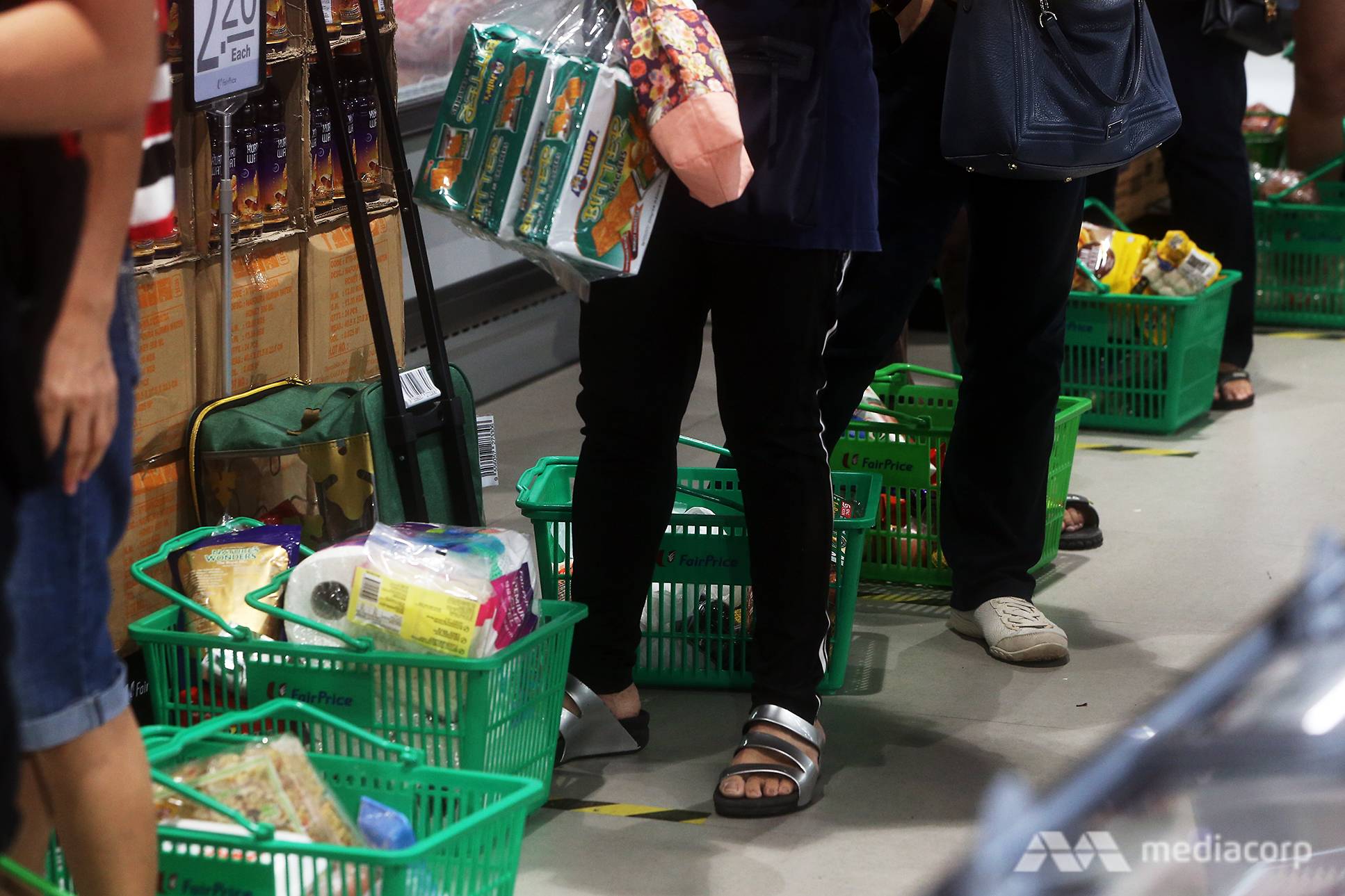
While demand from supermarkets is surging, demand from hotels, restaurants and other food services is down 50 to 80 per cent. (Photo: Ooi Boon Keong/TODAY)
The Big Read: Panic buying grabbed the headlines, but a quiet resilience is seeing Singaporeans through COVID-19 outbreak
READ: Commentary: Singaporeans queued for toilet paper and instant noodles – there is no shame in that
Because of this time lag, food is being produced based on old production schedules, said Mr Capri, and many farmers end up not being able to move these items to where demand has shifted to – that is, the supermarkets and homes.
“You are going to have a surplus and the food is going to end up not going where it needs to go,” he added.
The problem is further compounded by the reliance on traditional transportation links, such as air and sea, which have been severely disrupted as global trade and air travel grind to a halt.
“What is necessary is to take it to the consumers through the established supply chain. If disrupted, then new supply chains will have to be established very quickly,” said Dr Cecilia Tortajada, senior research fellow at the Lee Kuan Yew School of Public Policy’s Institute of Water Policy.
Commentary: COVID-19 emphasises the importance of Singapore’s free trade agreements
READ: Commentary: COVID-19 could redefine Singapore’s place in the global economy
WHAT CAN BE DONE IF PANDEMIC DRAGS ON
The challenge of ensuring adequate food supply has not become serious yet, said Prof Teng. But he warned that this may change depending on how long the pandemic drags on, and whether worldwide lockdowns continue to restrict the movement of farmers and food transporters.
“If this continues, it definitely would have an impact on the availability of agricultural produce and the transport of agricultural produce,” said Prof Teng.
One way to get around this problem for the longer term is to process the perishable food so that it can be kept longer, he suggested.
Fresh milk could be made into milk powder and exported, or fresh blueberries could be converted into blueberry jam.
However, he noted that many rural villages where the farms are located are not equipped with food-processing plants.
“If the crisis drags on for months and months, places which produce agricultural products may have to start thinking ‘should we go into food processing?’” Prof Teng said.
Another solution is to build up more local food sources, said Mr Capri, a point which FairPrice’s Mr Seah also highlighted.
Singapore, for example, has set a target of growing 30 per cent of the food it consumes by 2030. Home-based producers now meet less than 10 per cent of Singapore’s nutritional needs.
Both Mr Capri and Mr Seah said the COVID-19 pandemic has definitely accelerated plans for food localisation here and elsewhere around the globe.
READ: Demand for frozen food, freezers spikes amid COVID-19 pandemic
HOW AFFECTED SINGAPORE WHOLESALERS ARE ADAPTING
As a city-state that imports most of its food, the disruption in food supply chains across the globe would no doubt have an impact on food wholesalers and distributors in Singapore.
While demand from supermarkets is surging, demand from hotels, restaurants and other food services is down 50 to 80 per cent, said SFMA’s Mr Tan.
“This is also causing a lot of unbalanced demand,” he added.
As a city-state that imports most of its food, the disruption in food supply chains across the globe would no doubt have an impact on food wholesalers and distributors in Singapore. (Photo: Yong Jun Yuan/TODAY)
Distributors interviewed say they have had to cut down the volume of supplies imported into Singapore, look for new sources and in one case, totally transform their business model in response to the fast-changing situation.
With 80 per cent of his food products imported from Malaysia, Mr Anthony Lee, manager of Yee Lee Oils and Foodstuffs, said his company has not been able to receive his stocks in time, causing him to cancel some earlier orders from minimarts and supermarkets.
His company brings in packaged food items – such as instant noodles, cooking oil, mineral water, canned food, curry paste, and some sauces – and distributes them to hotels, restaurants and offices, as well as supermarkets.
As several of the factories he gets his supplies from have lowered production capacity to 30 to 50 per cent due to a shortage of workers, Mr Lee had to start sourcing from other factories in Malaysia, and is now trying to get suppliers from Thailand.
One problem he faces is that packaging materials, such as plastic bottles and tinned cans, are not deemed essential in Malaysia. Hence, materials for packing the food are in short supply, which in turn affects the food supply.
READ: Singapore, New Zealand committed to maintaining open supply chains amid COVID-19 situation
The amount of supplies which he receives has gone down by 40 to 50 per cent, with stocks in his warehouse able to last for about one more week.
“Now anywhere I can find raw materials, I just take as much as possible. Even if it only fulfils only 20 to 30 per cent of my order, I also take,” said Mr Lee.
On the other hand, he has a few thousand dollars worth of food supplies meant for hotels, restaurants and other food services sitting idle in his warehouse, as demand for those products has dropped.
While the products are the same, the supplies meant for these businesses are packed in large tin cans or large bottles that are not suitable for consumers, and hence he is not able to divert them to supermarkets.
“The demand suddenly switched … I can’t react because normally we forecast three months ahead. The change is too fast. I don’t know how to manage,” said Mr Lee.
While the majority (55 per cent) of his stock used to be for the F&B sector and hotels, now up to 75 per cent goes to supermarkets.
For Mr Justin Chou, chief executive officer of Glife, the sudden disruption meant that he had to quickly change his company’s business model – from supplying fresh vegetables, fruits and eggs to the F&B sector through e-commerce, to selling directly to consumers.
“It took three days to go from a business-to-business model to a business-to-consumer model,” he said, which included building a new website for consumers and setting up e-payment facilities.
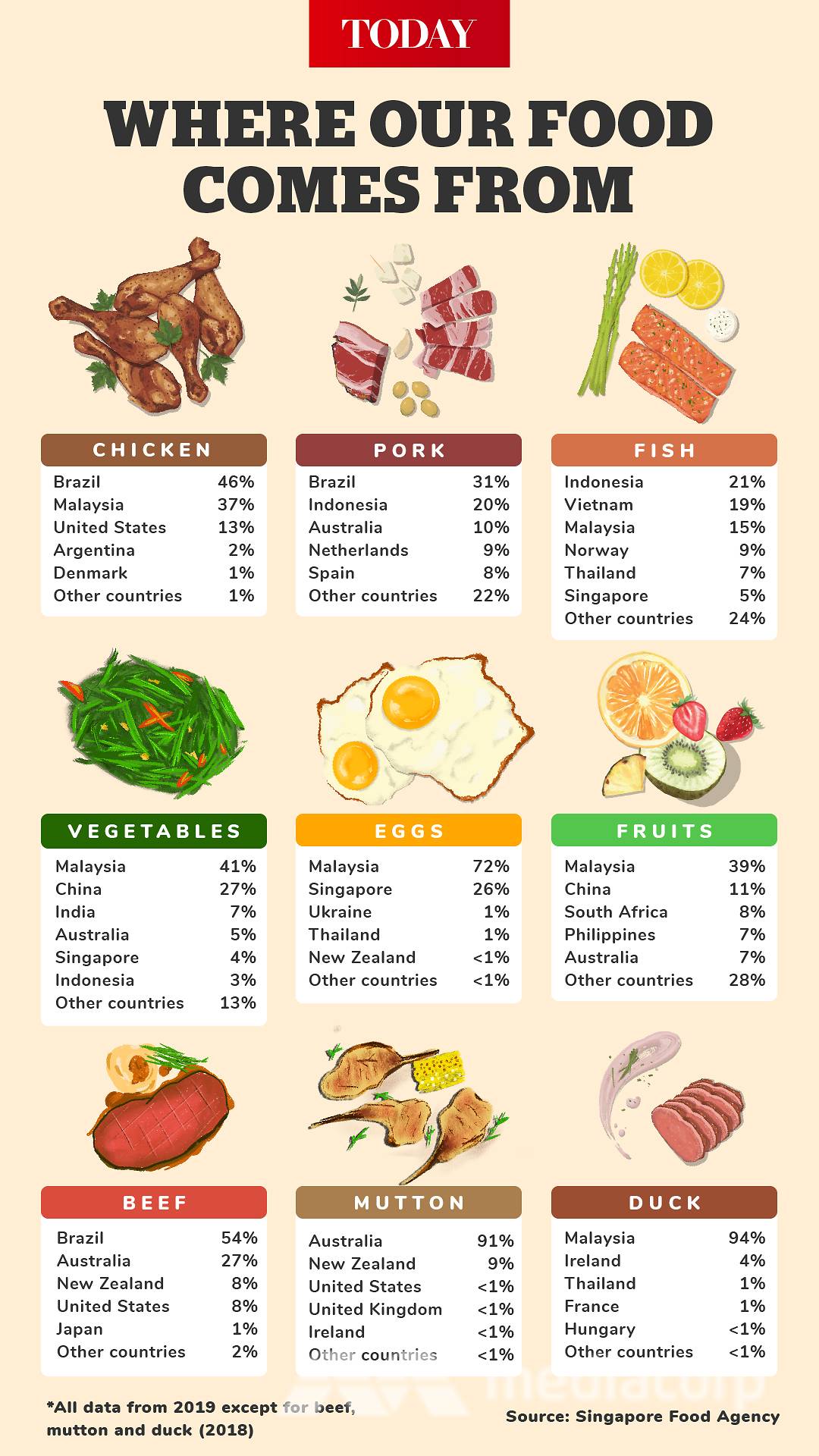
Infographic: Samuel Woo and Anam Musta’ein/TODAY
While demand from the segment which he originally served has fallen by 70 per cent, he said that consumers ordering from his e-commerce website has doubled every single day since its launch on Apr 7.
From fulfilling 35 orders on the first day, his company now has to fulfil over 100 orders every day and they are looking to increase the delivery slots to more than 200 next week.
“Last time I delivered to shopping centres. Now I go to neighbourhood estates,” said Mr Chou.
The other difference is that his workers would pack the fresh vegetables coming in bulk from Malaysia and China in smaller packaging.
Mr Chou also had to cut down on the import of luxury food products from Australia and Europe via air freight, and focus instead on bringing in more essential items from Malaysia and China.
“I start to sell more rice, rather than sell avocado,” he said.
READ: Commentary: Eating less meat could help the environment and our health – so what’s stopping us?
READ: Commentary: Add more plants, and less meat to your meals. Here’s why
He added that 70 per cent of his supplies are now delivered to consumers and supermarkets, and 30 per cent to the F&B industry – a reversal from before.
Mr Tai Seng Yee, executive director of Zenxin Organic Food, faced a similar predicament, where he had to halve the products normally brought in by air, such as organic grapes and broccoli from Australia.
His company sources organic vegetables and fruits from Malaysia and further afield, and then sells them directly to consumers through its website or distributes them to supermarkets.
WIth the grounding of most airplanes around the world, air freight costs have gone up significantly. Thus, it was no longer feasible to sell some of these products in Singapore as they would have to pass down some of the costs to consumers, who would find the prices too high, Mr Tai said.
SFMA’s Mr Tan said that food transported via air used to be able to piggyback on passenger flights which have now been almost obliterated.
“Goods flown into Singapore are facing a drastic increase in freight charges as they have to especially engage planes to fly in provisions,” he noted.
Lockdowns worldwide have also led to delays at ports and a shortage of containers, Mr Tan said, contributing to higher logistics costs for food supplies brought in by sea.
Wholesalers say that the costs they incur in bringing food into Singapore have gone up due to an increase in transportation charges. Mr Chou estimates his costs to have gone up by about 30 per cent.
READ: Commentary: Is Singapore’s decades-long shift away from agriculture about to take a U-turn?
IMPACT ON S’PORE CONSUMERS
The disruption in the food supply chains and the increase in logistics cost would translate to higher food prices for consumers in Singapore.
Already, prices of certain food items, such as threadfin and squid, have increased by 40 per cent, shoppers told TODAY.
Mrs Jade Sng, who shops at the wet market and FairPrice every weekend for her groceries said that the price of eggs has gone up from S$3.90 for 30 eggs to S$5.50.
One kilogram of onions used to cost about S$2 but it is now about S$4.50.
Around 26 per cent of the hard shell eggs in Singapore are produced locally. (Photo: TODAY)
With the global food supply chains now upended due to COVID-19, experts and industry players noted that consumers here would definitely be impacted, no matter how much Singapore has diversified its food sources.
FairPrice’s Mr Seah, who is also a Member of Parliament for Marine Parade GRC, said consumers would have to adjust and accept the fact that they may not be able to get their favourite brand of eggs, for example.
While eggs sold here are now mostly sourced from Malaysia, Mr Seah said FairPrice is looking into getting eggs from countries which the supermarket cooperative has not considered before due to high costs.
“Don’t be surprised if some time from now you find eggs from Ukraine coming in,” he said.
Last month, Mr Chan noted that given the dynamic global situation where there is news about a country or city putting up tighter controls every other day, Singaporeans must be mentally prepared for food prices to go up due to the constant disruptions in supply.
Mr Chan added that at the same time, Singapore and its people can take steps to ensure that food prices here are stable – that is, it only fluctuates within a certain range.
Singaporeans can be more open to other alternative food sources, as well as remain calm and not panic-buy. The country can also choose to diversify its food choices even when the situation is normal, he said.
READ: Commentary: Clean meat – the next big thing in Singapore’s push towards agriculture?
READ: Commentary: Meat eaters think going vegan a good idea but will be unenjoyable and inconvenient
Some shoppers like Mrs Sng have already started to make some adjustments.
Mrs Sng said that while she used to buy russet potatoes from the US, their price has gone up from S$2.50 to S$4.50 for 1kg.
She has turned to cheaper potatoes from Bangladesh that cost slightly over S$1 for 1kg. But these are not as good as the russet potatoes for making mashed potatoes, she noted.
“I probably won’t eat mashed potatoes for a while,” said the 66-year-old lecturer.
While she used to plan her meals and head out to the market to buy her food, she now makes decisions about what to cook on the spot, based on the prices of available food in the market.
“I’m not too alarmed, I expected the price increase,” she said.
Noting that some Singaporeans have been “living in excess”, she pointed out that this could be the time for them to be more aware of food waste.
“When prices go up, we really are careful with what we buy,” she said.
‘Not the same on Zoom’: For recovering addicts, why safe distancing could spell a relapse
SINGAPORE: On the first day of the “circuit breaker”, Eugene was triggered by a flashback of being sexually abused by his mother for three years when he was in school.
Usually, his flashbacks resemble a polaroid-like snapshot, like an image of his mother’s dress, and hit him like major gut punch.
But for the first time in his life, the 40-year-old’s memories served up the “most graphic flashback of them all” – a playback of the abuse happening to him.
“That moment tore down all my belief that I am worthy of everything good, everything I’ve been trying to build all these years. Instead, I felt shame and guilt,” he shared over the phone three days after the incident.
Eugene is one of the eight recovering addicts who spoke with CNA Insider, on condition of anonymity, about how the “circuit breaker” period amid the COVID-19 outbreak has affected their recovery.
“When the flashback happened, my mind froze,” said Eugene. “I just cried and cried. I had major anxiety.
I couldn’t talk. I couldn’t even breathe. It’s almost paralysing.
In normal times, he’d be able to turn easily to his counsellor, Tham Yuen Han – or Han, as her clients call her. For nine years, Eugene has been attending recovery support group sessions and individual counselling sessions at We Care Community Services, ever since he first sought help for his methamphetamine addiction.
But under Singapore’s stringent safe distancing measures rolled out on Apr 7, We Care has had to move sessions online at least until May 4, possibly longer if the measures are extended. The recovery centre deals with a range of addictions, such as alcohol, drug, sex and love, gambling and binge eating.
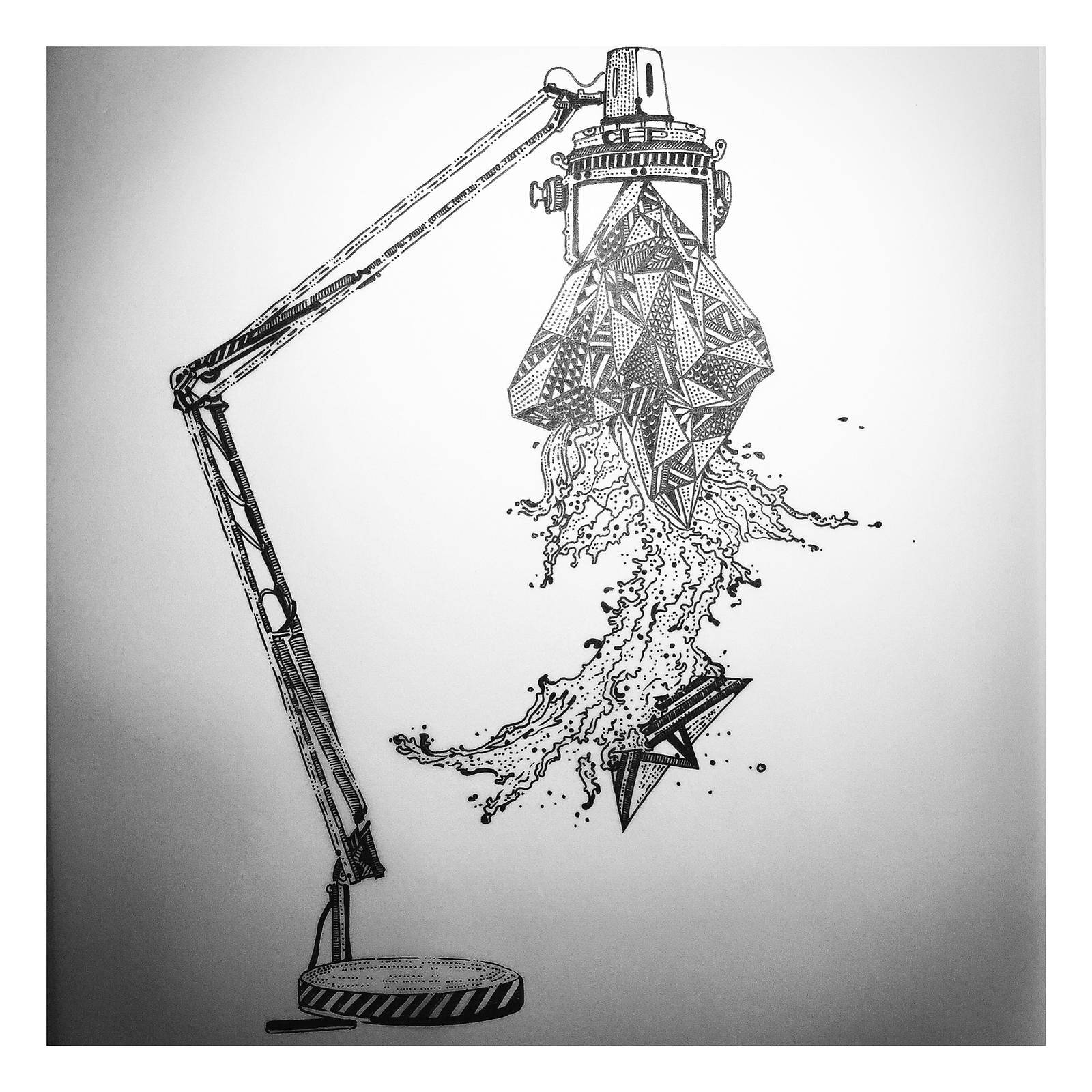
Artwork by ‘Eugene’ expressing his emotions. The paper boat represents himself as an addict in the midst of chaos.
MORE IN DISTRESS
Eugene isn’t the only recovering addict who has been triggered under the stress and isolation of the past fortnight.
According to Yuen Han, the managing director of We Care, the centre usually gets two walk-in crisis situations in a week. But within the first week of the “circuit breaker”, it attended to six crisis calls – five from current clients, and one from a newcomer.
These calls related, for instance, to trauma flashbacks, anxiety attacks, paranoia and financial distress.
Charles, 58, a recovering alcoholic, empathises with those struggling with having to stay home for weeks on end. “For those younger in their sobriety journey, it is very difficult to be confined in one place,” he said.
“I remember the first time I was on a plane for six hours (without alcohol) – I wanted to jump out of the plane after four hours.”
(File photo: Marcus Mark Ramos)
This period would also be “highly distressing” to newly recovering addicts who must live under the same roof with family members they have strained ties with. Said Yuen Han: “Their addiction would have damaged their family relationship over the years, and they wouldn’t have had enough recovery time to mend it yet.”
Structure is paramount to maintaining sobriety, even if one has been sober for years – it’s even more crucial for addicts who are less than six months into recovery. The latter, said Yuen Han, are “just learning to regulate their emotions and to deal with urges, triggers and cravings”.
“They’re also in the early stages of establishing structure and routine. Previously that would entail coming into the centre daily, getting up at a certain time, turning up for a specific meeting, checking in with the counsellor, or group therapy on a certain day at a certain time,” she added.
The “circuit breaker” would have disrupted those routines.
Tham Yuen Han (second from right), the managing director of We Care, with volunteers and beneficiaries at a 2019 event. (Photo: We Care Community Services)
ISOLATION THE ENEMY
But it’s the isolation that can most take its toll.
Take Hafiz, 33, a newly recovering methamphetamine addict who has been clean for three months. When his wife – who’s in an essential service job – leaves for work every day, he’s left alone with his thoughts at home, and vulnerable to a relapse.
The toilet in his master bedroom, where he would get high the past, can be particularly triggering. That’s where technology has been a lifesaver for him. “I can just go on YouTube, Spotify, go for my mindfulness talk, motivation talk (online)… In one day, I can attend two Zoom meetings,” he said.
He has also been learning to develop a routine. “When I was young, nobody taught me how to plan a timetable, how to manage my life. Now, I even share my Google calendar with my wife, so she can see what I update there,” he said.
Narcotics Anonymous key tags to remind ‘Hafiz’ of how many times he has “failed”. (Photo: ‘Hafiz’)
He even took up work as a McDelivery rider, to keep his mind busy. But after just eight days on the job, McDonald’s suspended all operations.
Similarly, Eugene maintains a fixed schedule to keep his mind from “going haywire” during this time at home. “I wake up and do my meditation… Then I call my sponsor and I go to as many online meetings as possible. Right now, we have lunch meetings, evening meetings – so basically, I just stay connected.”
He added: “My daily check-in (with Han) is important right now. We’ve increased counselling by phone and video to twice a week. Just to see her and hear her voice is comforting.”
We Care has moved its programmes and group plus counselling sessions to Zoom, while counsellors and recovery guides also regularly call or text their clients to check in.
Using Zoom. (Photo: Unsplash/Tran Mau Tri Tam)
CAN’T REPLACE A HUG
But useful as technology has been in helping them stay in touch, it is not the same as being physically in the same room as a fellow recovering addict sharing about their experiences.
Oliver, 29, who is recovering from an addiction to prescription substances, said: “It’s the little tics, like the way they tell a story. The tone and everything. Not that online meetings mean less, but they’re just not the same.”
Stuart, 63, a member of Alcoholics Anonymous (AA) Singapore, says there’s an intimacy in physical presence that heightens empathy.
Describing for example how members would giggle at each other’s “terrible stories of imprisonment and violence”, he said: “We simply recognise the madness that drives otherwise nice people to do excessive things.”
Hugs are one of Eugene’s favourite things at group sessions. “I really, really like to get hugged by people. At the end of the meeting, it’s like, ‘oh my god, cannot wait to hug you guys’,” he said.
Added Oliver: “As sympathetic and supportive as your family members can be, no one can give you that empathy other than another addict. And that itself is very empowering.”

‘Eugene’ baked this cake.. He says addicts tend to be about “all or nothing”. When he does something, he goes all out. (Photo: ‘Eugene’)
Andrew da Roza, chairman of We Care and an addictions psychotherapist, understands that technology can mute the sense of being in a compassionate, non-judgmental environment.
“For addicts, that validation is extraordinarily important… That’s a little bit lost on Zoom because you don’t feel the same energy,” he explained.
“Besides, your brain has already associated that particular (meeting) room, all those chairs, the smell, and the light setting with feeling safe.”
In case a client does have a severe relapse, We Care has gotten an exemption from the Ministry of Trade and Industry that allows its counsellors to attend to onsite crisis cases with risk of self-harm, violence, and suicide.
WAYS TO COPE
But for the most part, the recovering addicts that CNA Insider have so far found ways to cope with this safe distancing period.
Belle, 45, does so by helping others. Once plagued by loneliness at the height of her drug addiction, and the fear of not being accepted for being transgender, she has since gone for a peer support specialist course to learn to reach out to others.
“Apr 24 will mark my 18th month of being clean. I believe my base is already solid, so I work with newcomers (during this “circuit breaker”). I text them and ask how they are,” she said, adding that she also encourages them to join the Zoom meetings.
Not everyone is so tech savvy. Older folks make up a significant portion of drop-ins at We Care.
Said Ben, 38, who is five months into his recovery: “Most of them didn’t know how to use the computer initially. But the turnout for Zoom meetings has been quite good – a lot of the seniors are learning how to use Zoom, so it’s very comforting.”
Elizabeth, 53, is one of them. “All this while, I didn’t know about computers. But when I came to We Care, they gave me a chance to learn to use computers, use a smartphone. All of my life, I just knew only how to use drugs.”
Charles, now 16 years sober, is confident that the “circuit breaker” won’t make him pick up a drink again. In fact, he sees it as an enforced one-month break from work.
“For many of us with addiction, we’re also workaholics. We do things either zero or everything. So, thank you to the virus for allowing me time to take care of myself,” he said.
As for Eugene, boredom – more so than nasty flashbacks – is the biggest enemy to his sobriety. While others might turn to Netflix to kill time, he loathes sitting around; he needs to move.
“I have two dogs. So I walk them twice a day,” he said.
“I also plan to clean out my closet, throw away stuff I don’t need. Next thing I’m doing is clean up my pantry. Probably run 10km a day. I’m going to be the healthiest I’ve ever been, when this is all over,” he quipped.
For help with addiction:
We Care Community Services
6547 5459 or 9641 9648
help@wecare.org.sg
Alcoholics Anonymous Singapore
8112 8089
help@singaporeaa.org
Sex and Love Addicts Anonymous Singapore
slaa.singapore@gmail.com
Narcotics Anonymous Singapore
8405 8432
publicinfo@nasingapore.org
National Addictions Management Services (NAMS)
6732 6837
National Problem Gambling Helpline
1800 666 8668
Away from family to defend the skies: Some RSAF crew live on base as part of COVID-19 adjustments
SINGAPORE: Every morning, F-15SG fighter pilot Captain (CPT) Dominic Lee, 32, would get a regular visitor to his bedroom – his barely two-year-old daughter rushing in to look for him.
So when dad was not in his bed one morning, his daughter ran around the house to look for him, even peeking into the bathroom to check if he was taking a shower.
The COVID-19 pandemic has forced some Singapore Armed Forces servicemen like CPT Lee to live on base to reduce the risk of infection within operational units.
This arrangement applies to those performing critical functions, like the protection of key installations, maritime security or air defence.
CPT Lee used to be able to go home every day after working hours. Now, he has been staying in Paya Lebar Air Base for more than a week.
“I am really close to them and I love to go home every day to play with them and be part of their growing up,” said CPT Lee, who has another seven-month-old daughter.
“These could be the first times they crawl, sit up or even walk. I would like to be there, but because of this, I am unable to do so.”
CPT Lim and maintenance personnel conducting checks on the jet’s landing gear. (Photo: MINDEF)
CPT Lee understands this is necessary to maintain operational readiness and protect Singapore’s skies.
“Fighter aircrew like myself need to continue flying to remain competent, so that when we are being called upon to do the job, we are always ready,” he told reporters via video conference on Saturday (Apr 18),
It is not just pilots – other Republic of Singapore Air Force (RSAF) personnel performing critical duties like air defence weapon operators, air operations systems experts and some maintenance crew must also stay in before and during their operational duty.
This means some have been separated from their families for longer than usual.
The RSAF has made things easier by allowing them to make video calls in specific areas that were previously restricted, and ensuring family members can contact units directly if they need help with anything.
JET NOISE
As most residents now work and study from home as part of Singapore’s “circuit breaker” measures, CPT Lee also asked members of the public for their patience if they are disturbed by the roar of fighter jets overhead.
He said the RSAF is constantly reviewing routes to minimise flying over residential areas while not compromising safety, adding that majority of their flights are done overseas or over water.
An RSAF F-15SG from the Peace Carvin V Detachment taking off from Mountain Home Air Force Base, Idaho. (Photo: MINDEF)
Flights have also been reduced to the minimum required to maintain proficiency and operational readiness, while night flights are restricted to certain weekdays and must finish by 11pm unless operationally required.
“I seek fellow Singaporeans who are working from home at this time to be patient and contend with the sound of freedom when we fly,” he said.
READ: COVID-19: A recruit’s first day at SAF BMTC on Pulau Tekong – without parents’ send-off
Affected RSAF personnel said family support is important too, as spouses take over household and childcare duties during this period.
CPT Lee said he feels blessed to have a “capable and supportive wife who is able to manage the home front while I am isolated on base”.
“My wife is taking care of my kids full time, and I think it is an incredible feat for her,” he added. “Those who are mothers will understand, to face kids 24/7 with no MC and leave, and not really have much time for yourself.”
READ: SAF making thousands of calls a day to contact trace, check stay-home compliance as COVID-19 fight hits ‘critical juncture’
CPT Lee stays in touch by watching his wife’s Instagram stories when he is off duty, explaining that this allows him to keep up with his children’s lives.
“Being able to connect with family is crucial, especially during this difficult time,” he said. “Even though I’m not physically there, the least I could do is provide some kind of support and know each other is safe.”
MAKING SACRIFICES
It is the other way round for Military Expert 3 (ME3) Rajeswary Pandian Suppiah, 42, an air operations systems expert whose husband is holding the fort back home.
The first thing she will do when she gets back is to say a “big thank you” to him. After all, he is a former regular who knows how important her job is. She handles surveillance sensors, communications and computer systems so the RSAF can detect threats early.

Military Expert 3 Rajeswary Pandian Suppiah signed on when she was 19, inspired by her uncle who was also serving in the force. (Photo: MINDEF)
“Usually it’s just how’s your day, then you get tired and you just want to rest. (Now) I want to spend quality time with my husband,” ME3 Rajes said, adding that she misses homecooked food.
She was only told she would have to live on base a day before her duty cycle started, and she now has to work longer hours as everyone is working in smaller teams.
Corporal First Class Keith Lim and the I-HAWK, a aurface-to-air missile system that can hit targets up to 40km away. (Photo: MINDEF)
For 22-year-old full-time national serviceman Keith Lim, this experience has given more meaning to his national service, even though he misses the days when he could book out of camp during the weekend to spend time and play games with his family.
“We have to sacrifice some things,” said Corporal First Class Lim, an air defence weapon operator.
“All this has made by NS life more worthwhile, being able to know my contribution is important to help the nation fight this COVID-19 crisis.”
Two men taken to hospital after accident along Shenton Way
SINGAPORE: A 66-year-old bus passenger and a 47-year-old car driver were taken to the hospital after they were involved in an accident along Shenton Way on Sunday (Apr 19) afternoon.
The Singapore Civil Defence Force (SCDF) said it responded to the road traffic accident at the junction of Shenton Way and Keppel Road at about 12.40pm.
One person was trapped and had to be rescued with hydraulic tools, SCDF said.
Both men were conscious when they were taken to Singapore General Hospital, the police added.
The accident happened at the junction of Shenton Way and Keppel Road. (Photo: Joris Knetsch).
Photos sent by CNA reader Joris Knetsch showed the front of a black car that appeared to be smashed, with parts of the vehicle dislodged and scattered on the road. The car was in front of a SBS Transit bus that also sustained damage to its body.
Mr Knetsch said it took between 10 to 15 minutes for the ambulance to arrive. The fire engine arrived about five minutes after that.
“A Service 30 bus was travelling straight on green light along Keppel Road when a car suddenly shot out and cut into its lane. This resulted in a collision and a bus passenger was injured,” said SBS Transit’s senior vice-president of corporate communications Ms Tammy Tan.
The bus company is in contact with the injured bus passenger “to assist as best (as) we can”, she added.
Police investigations are ongoing.
This story came from a reader tip-off. If you would like to send in photos or videos of something newsworthy, WhatsApp our Mediacorp news hotline at +65 8218 8281 or message us on Facebook.
COVID-19: 650,000 migrant workers and domestic helpers to receive face masks
SINGAPORE: A total of 400,000 migrant workers and 250,000 domestic helpers will receive face masks as part of efforts to improve the safety of foreign workers, said Temasek Foundation on Sunday (Apr 19).
The workers will be given 1.3 million reusable cloth masks that have a filter pocket, and 650,000 surgical masks that can be used to “provide additional filtration”, the philanthropic arm of state investor Temasek Holdings said in a media release.
Each worker will receive two reusable cloth masks and one surgical mask, it added.
The mask kits will be distributed in phases to migrant workers starting from Monday. The Migrant Workers’ Centre will inform dormitory operators about collection details.
Masks for domestic helpers will be sent to their residential addresses from late May onwards.
Since Apr 14, individuals must put on a mask when they are outside of their homes, with few exceptions.
READ: COVID-19: What the law says about having to wear a mask when outside your home
Temasek Foundation is part of the “MaskForce” initiative, involving donors, non-governmental organisations and private-sector companies which have contributed more than S$3 million worth of donations – in cash or in kind – to produce the masks.
The “community-led” initiative is spearheaded by Senior Minister of State Sim Ann.
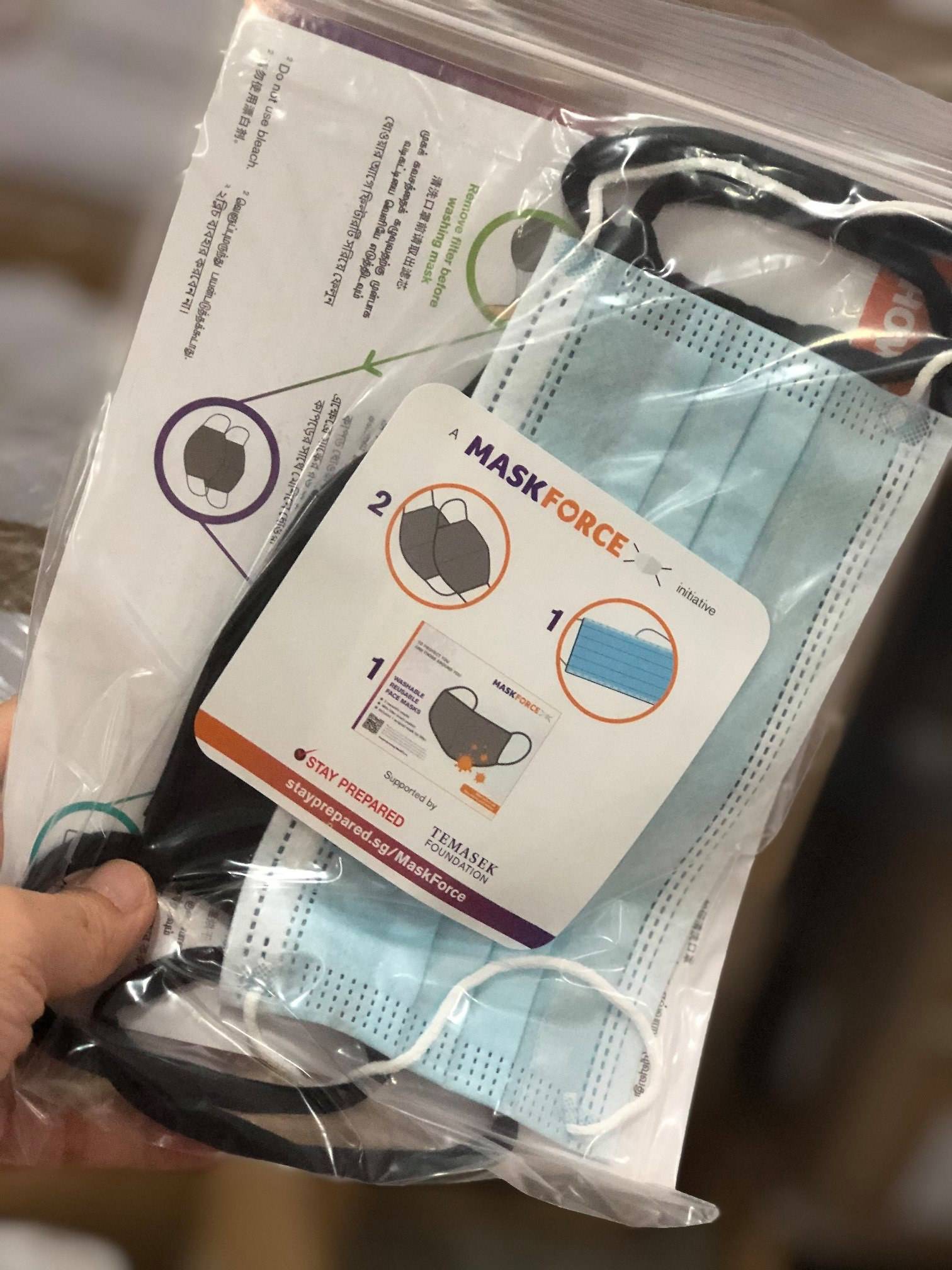
The mask kits. (Facebook/Sim Ann).
The reusable masks were produced by Singapore garment manufacturers Bodynits, Spring Knitwear, and Teo Garments, with the help of another 10 local apparel companies such as Danovel and Esta. It took a “record time” of two weeks to produce the masks, said Temasek Foundation.
Local tailor CYC contributed fabric for 20,000 masks, while Brother International Singapore contributed 12 sewing machines and repair services.
READ: ‘I think about my family, not about me’: A foreign worker stricken with COVID-19 has concerns far away
READ: ‘Just pray, very soon I can get well’: Migrant workers from dorms battle on
Ms Sim said the country is committed to keeping migrant workers safe amid the pandemic as they are “an integral part of the Singapore’s workforce” that have contributed to building our infrastructure and taking care of the community.
“MaskForce is now prepared to look beyond masks to equip migrant workers with even more items that are practical and helpful,” she added.
In a Facebook post, Ms Sim said that the initiative will work with the Ministry of Manpower to ensure that the workers get the kits.
Manpower Minister Josephine Teo separately wrote on Facebook that she is “very touched” that people have reached out to the ministry to offer help to the workers.
“Besides NGOs, the corporate community have also come on board,” Mrs Teo said. “This community-led initiative complements the government’s efforts to take care of our migrant workers as we fight the COVID-19 outbreak.”
BOOKMARK THIS: Our comprehensive coverage of the coronavirus outbreak and its developments
Download our app or subscribe to our Telegram channel for the latest updates on the coronavirus outbreak: https://cna.asia/telegram
Coronavirus: 596 new cases reported in Singapore today
[ad_1]
The Ministry of Health (MOH) has preliminarily confirmed 596 new coronavirus cases in Singapore as of 12pm today (April 19).
This brings the total number of cases in Singapore to 6,588.
In its statement, MOH said a “vast majority” of cases are work permit holders residing in foreign worker dormitories.
Of the 596 cases, it added that 25 are Singaporeans or Permanent Residents.
More details to come.
For the latest updates on the coronavirus, visit here.
[ad_2]
Source link
Claims that Ho Ching's salary is 'around $100 million' false, says Temasek Holdings
[ad_1]
Temasek Holdings has refuted claims that its chief executive Ho Ching earns an annual salary of “around $100 million”.
In a statement posted on its website on Sunday (April 19), it added that Ho Ching’s annual compensation “is neither the highest within Temasek, nor is she amongst the top five highest paid executives in Temasek”.
Ho is the wife of Prime Minister Lee Hsien Loong.
The rebuttal was in response to “chatter based on an Asian talk show commentary” which made the claim of her annual salary. The commentary is believed to have stemmed from a programme on Taiwanese media.
Here is their statement in full:
“Temasek has a long term ownership mindset. This includes its compensation framework to align employee and shareholder interests over economic cycles. This is part of our ethos of doing the right thing, as a forward looking institution.
“Incentives focus on long term performance, and ensure employees share gains and pains alongside Temasek’s shareholder during the economic cycles. Deferred compensation is an integral part of our compensation and clawbacks have been applied during years where the performance requires it.
[ad_2]
Source link
No joke: Thai family tapes child to the floor so dad can WFH in peace
[ad_1]
Get your dose of humorous and wacky stories that happened this week.
Thai family tapes child to the floor so dad can WFH in peace
Kids are a bundle of joy. Until you’ve got an important Zoom meeting with your boss’ boss and they just can’t seem to sit still, that is.
Which is why this Thai family quite literally, taped their young daughter down.
In a series of photos shared on Facebook, a mess of toys and an overturned chair can be seen scattered across the room, a young girl lies in the middle of it all, held down by clear adhesive tape with a pillow to cushion her head.
Meanwhile, a man in the background clacks away on his laptop.
“Mum is cooking, dad is working, daughter is lying in the living room,” her mother wrote in her post.
The child, if anything, seems pretty contented with the arrangement, if her expression is anything to go by.
[ad_2]
Source link


